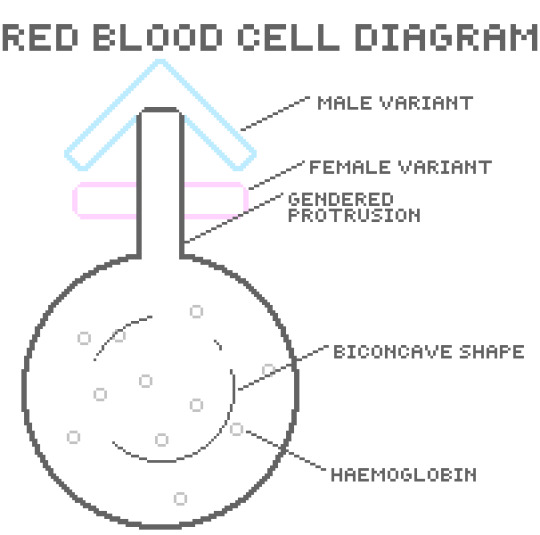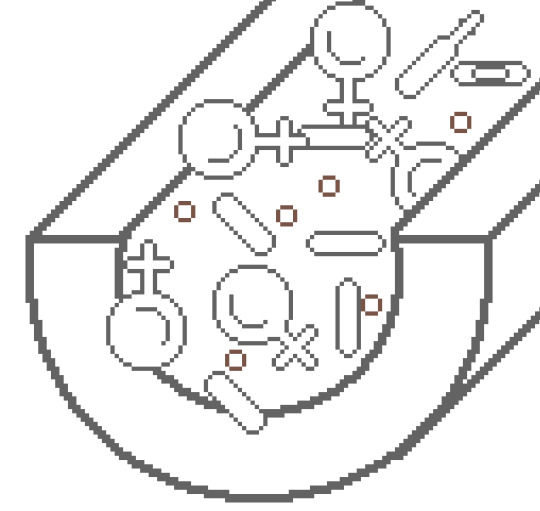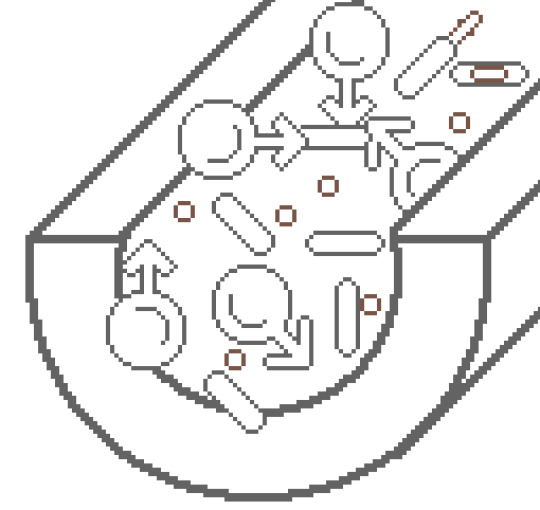Text
The Fantasy of Honorary Whiteness by Grace Cho
This text is about the yanggongju, the Korean prostitutes who served the US military in the Korean war, and the phenomenon of yanggongju marrying US soldiers through these “camptowns” to escape their situation and reach the status of “honorary whiteness” in the States.
“The story of honorary whiteness is a facet of the American dream, the larger fantasy of how the United States imagines itself as a site of liberation and a nation of saviors, a fantasy that is mutually supported by both the producers of this knowledge and the subjects that inform it.”
It’s frightening to see this situation of desperation romanticized. Cho mentions a news article titled “A War Bride Named ‘Blue’ Comes Home: Johnie Morgan Returns to the U.S. with a Korean Wife Who Once Walked 200 Miles to Be with Him.” The man chose the name Blue for her; another step of her identity erasure. And her decision to walk 200 miles from Seoul to Busan shows her desperation and her hope that he’d accept her and take her away from her life in Korea. When I read this I was so alarmed as to how the press could frame this as a charming love story when it so clearly wasn’t, but then again, had I not known the context from Grace Cho’s writing, I might have bought into it just the same.
On the title:
When I read the title “The Fantasy of Honorary Whiteness” I thought immediately of the “model minority” myth of Asian Americans. I thought about how Asians are not counted as people of color in American college statistics. It feels like we have reached some element of “honorary whiteness” for Asians that allows people and institutions to deny their history of oppression and their culture and identity.
0 notes
Text
On Collaboration, Agency and Contemporary Art by Maria Lind
“The motivation behind today's collaborations varies radically, almost in proportion to the number of different modes of working. A common explanation is the wish to practice generosity and sharing as an alternative to contemporary individualism and the traditional role of the romantic artist as a solitary genius and marketable identity.”
“different disciplines meet and, at best, fertilize each other.”
I think the concept of a complete collaboration/collective in which the artist is solely recognized as a group and not a series of individuals who contribute separately is so cool. I feel like it would be very difficult to entirely relinquish one’s authorship and name, especially when it comes to art, which is so personal and identity-based. I’d love to be able to do that some day.
But this also has me thinking about how broad collaboration is. So many of the art-related things that we do in the age of the internet are collaborations without us really realizing. Art telephones, “draw this in your style” challenges, and even art prompts.
There is an online art event every year in July called Art Fight that I have participated in for the last several years. It’s based around character design: you upload your character designs and earn points for your team by drawing characters designed by people from the opposing team. I never explicitly thought of it as a collaboration but it absolutely is. It’s sort of a cold, distant online collaboration but a collaboration nonetheless. And the members of Art Fight act as a collective producing a massive body of work that is all of the art fight “attacks.” (This is a huge event open to anybody: last year’s battle produced over 600,000 pieces of art or “attacks”.)
It would be interesting to see all of the pieces at once in a massive installation or gallery. It could act as a representation of the powers of human work, artistic spirit, and technological advancement (internet!!).
0 notes
Text
https://docs.google.com/presentation/d/1DZA4Yx-ohVvs1HGHvQIK3QtuAM9_t_2PgNytXGq2YQE/edit
Andrew Hager and Sarah Beth Gelleny
Miwon Kwon
“By Way of Conclusion: One Place After Another”
0 notes
Text
final few images
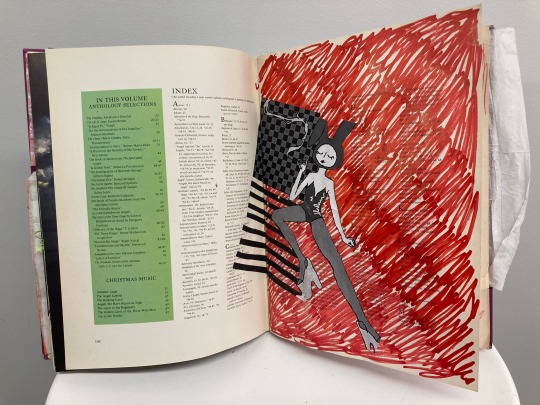

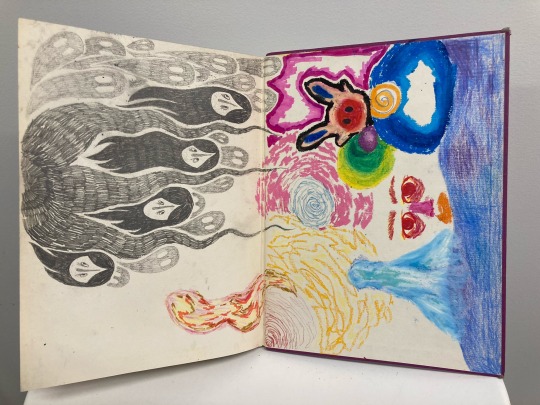
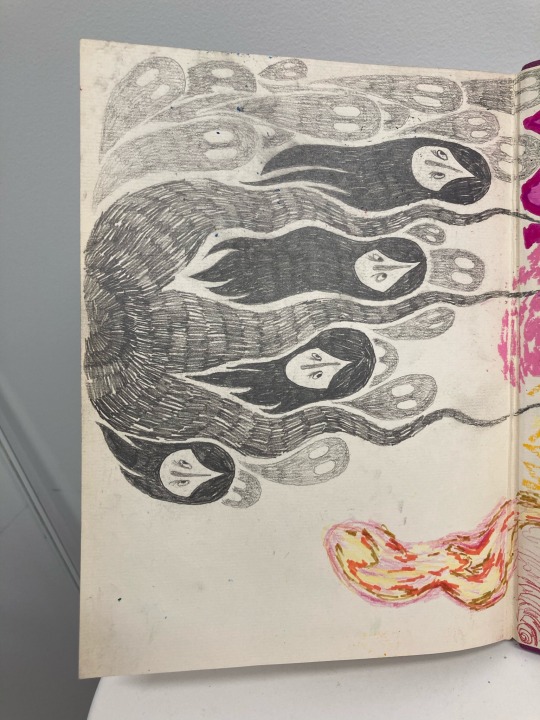
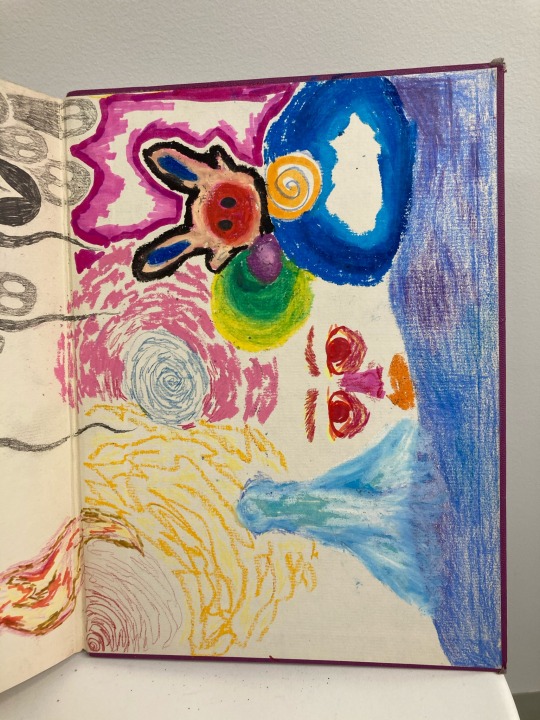
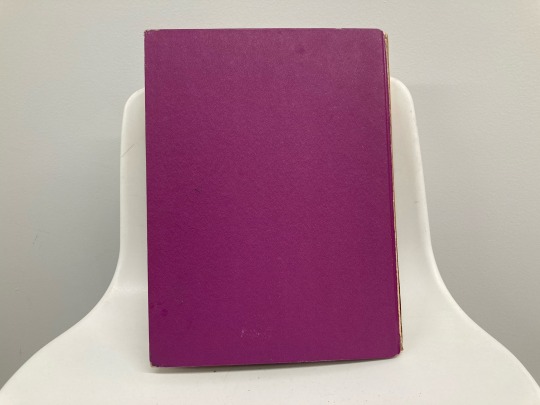
Yearbook • collaborative project by Andrew Hager and Riola Lubega
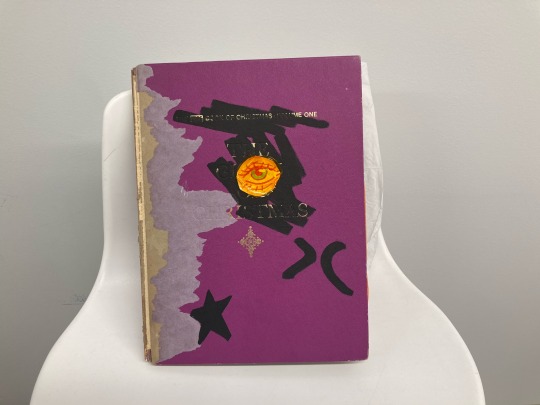
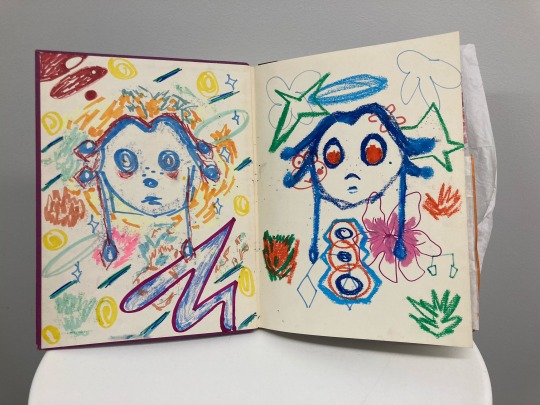


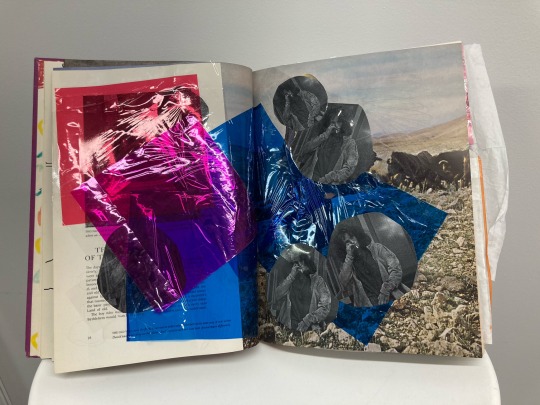

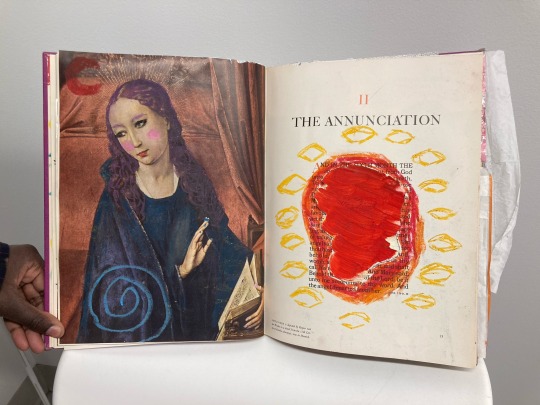
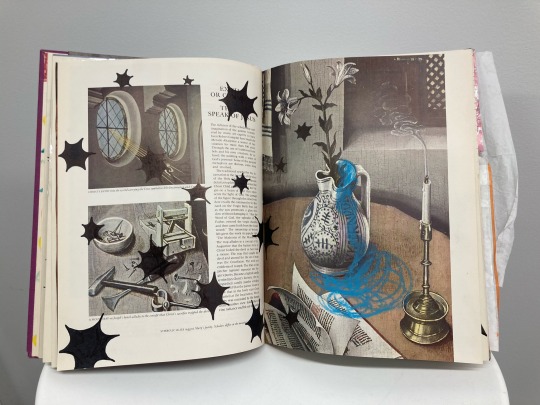

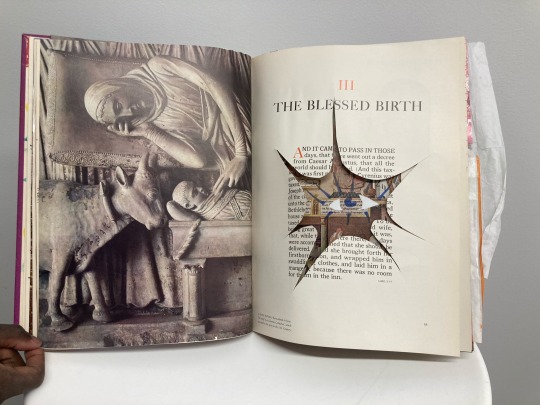
first ten images (tumblr limit)
3 notes
·
View notes
Text
next ten images

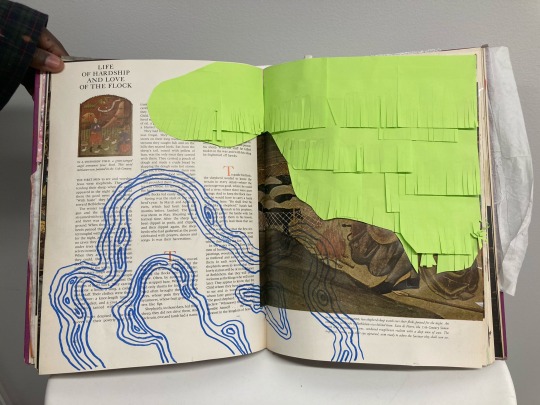
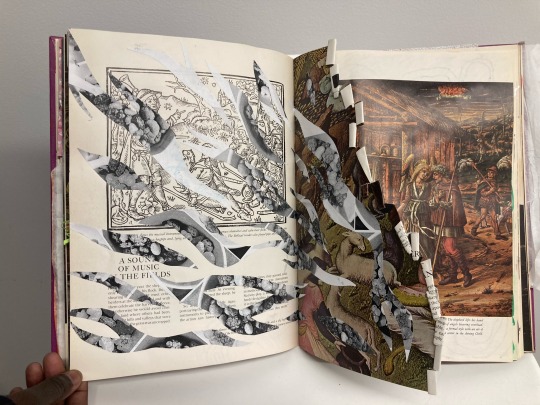
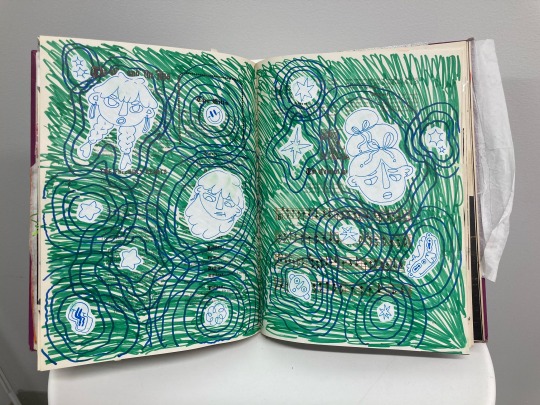

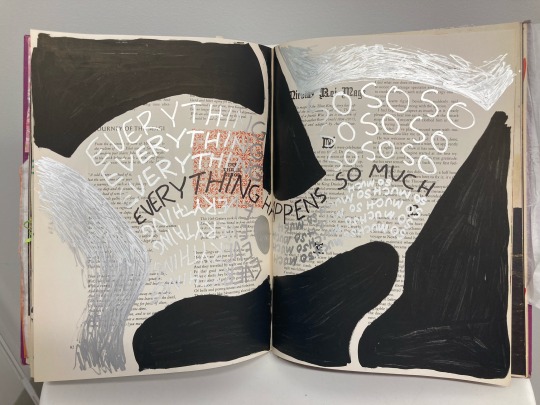

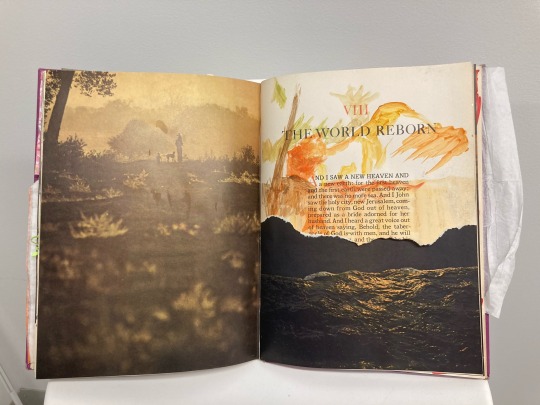
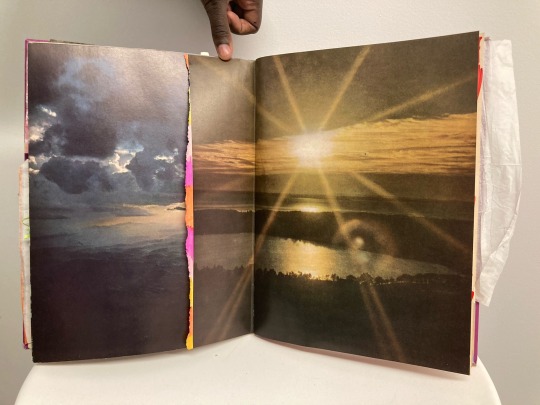
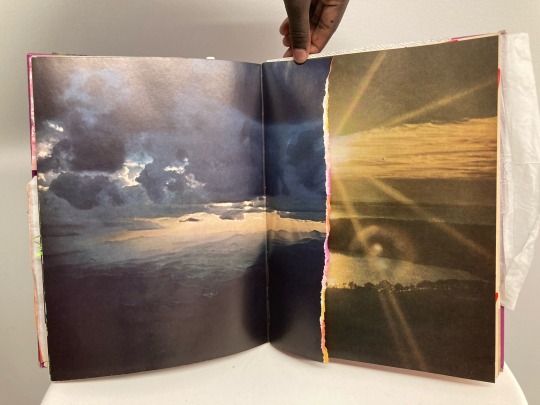
Yearbook • collaborative project by Andrew Hager and Riola Lubega










first ten images (tumblr limit)
3 notes
·
View notes
Text
next ten images
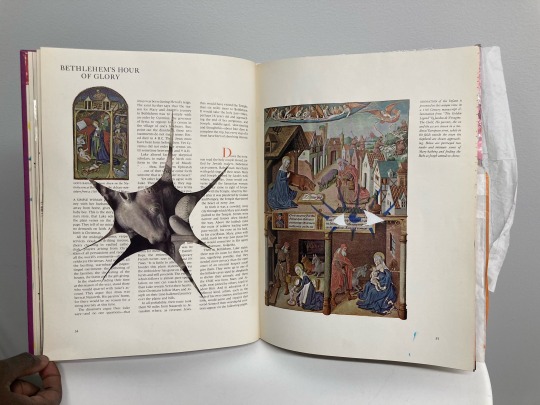
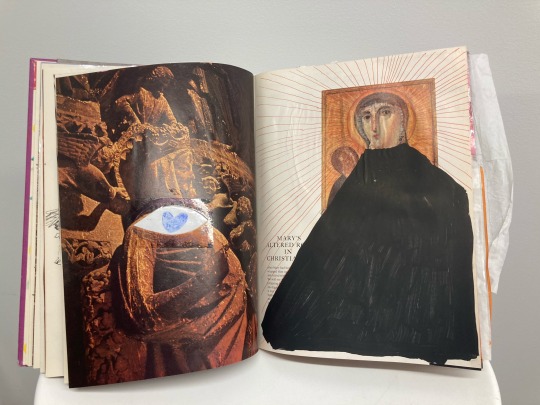

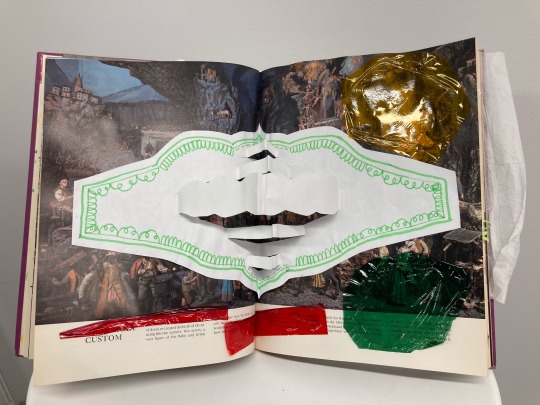
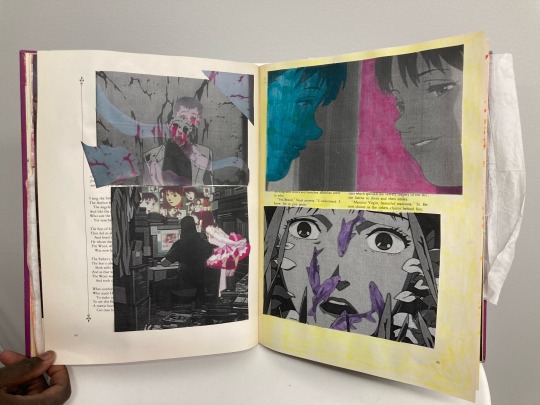


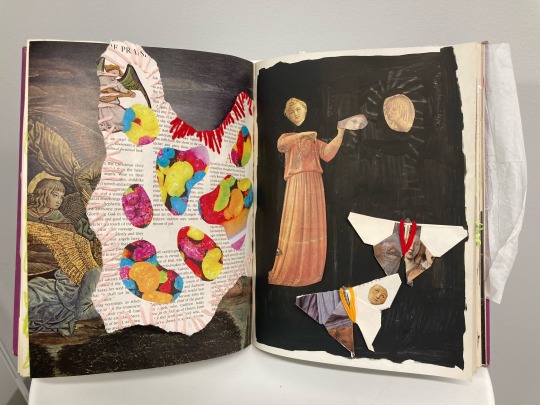


Yearbook • collaborative project by Andrew Hager and Riola Lubega










first ten images (tumblr limit)
3 notes
·
View notes
Text
Yearbook • collaborative project by Andrew Hager and Riola Lubega










first ten images (tumblr limit)
3 notes
·
View notes
Photo
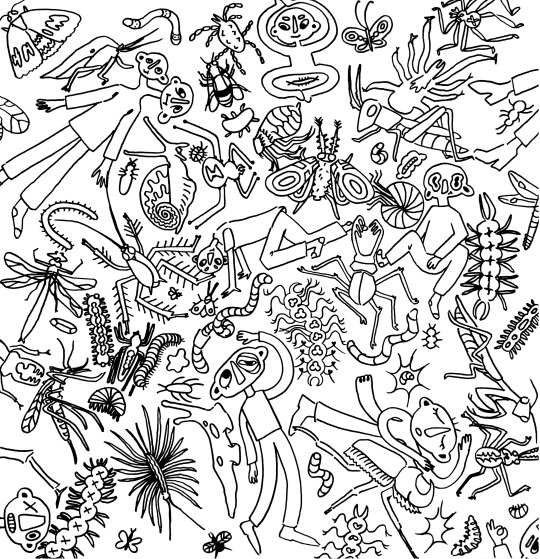
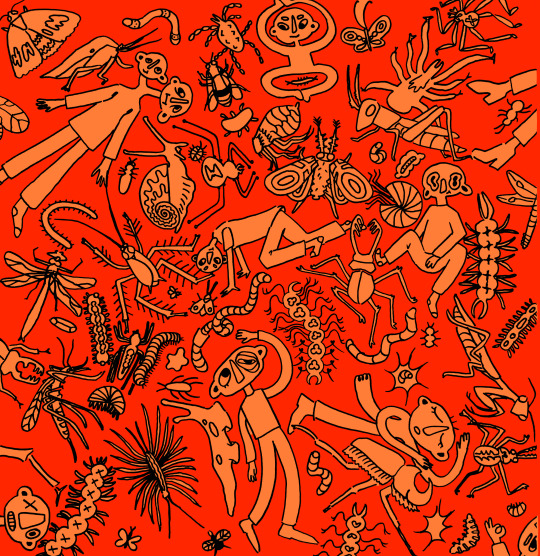
Bug World: a heterotopia of deviance
22x24in. Sharpie on paper with digital color
Bug World is an imagined heterotopia of deviance. Human society shuns and is disgusted by bugs. Bugs are deviant. We build over their habitat and then shoo them, squish them, and spray them with pesticides.
The bugs drawn here who have been exiled from human society have gathered together to form a new society (Bug World). Humans deemed “deviant” (who may not be accepted in conventional society) can go to Bug World and be accepted. But to many, the thought of entering a society full of bugs is unappealing because of the disgust and negative feelings they harbor towards bugs. Therefore, leaving traditional civilization and joining Bug World is only a worthy endeavor if the person can learn to be accepting of insects and other creepy crawlies, which they have been conditioned by society to feel uncomfortable around (just as they have been on the other end of themselves).
0 notes
Text
Notes on Hook’s “keeping close to home”
“The academic setting is separate only when we work to make it so. it is a false dichotomy which suggests that academics and/or intellectuals can only speak to one another, that we cannot home to speak with the masses.”
“If I do not speak in a language that can be understood, then there is little chance for dialogue.”
Academics who are working class/minority people or otherwise silenced voices may feel compelled to talk in academic jargon to prove their “worth” to white intellectuals so that their individual voice becomes heard by this prestigious few, but then the voice loses the ability to be heard and digested by the masses.
“there are few educational and social places where students who wish to affirm positive ties to ethnicity—to blackness, to working class backgrounds—can receive affirmation and support. Ideologically, the message is clear—assimilation is the way to gain acceptance and approval from those in power.”
This quote, in particular, strikes me (with sadness and alarm). Many course offerings may have names that suggest they are about ethnicity, but do those classes facilitate genuine affirmation and support? Things can look good on paper but pale in actuality because an academic institution is still a bourgeois and gatekept community at its root—the author mentions that even black professors would show disapproval of black students.
0 notes
Text
One thing I find interesting is that “heterotopia” is one letter away from “heterotropia,” which is an eye condition that I have that gives me double vision and causes the view through my right eye to be tilted/crooked. In a way my vision double/crooked version of the world feels like my own personal heterotopia.
Notes on Foucault’s “Other Spaces/heterotopias”
“it is not possible to disregard the fatal intersection of time with space”
“we are at a moment, i believe, when our experience of the world is less that of a long life developing through time than that of a network that connects points and intersects with its own skein.”
With the rise of the internet and the digitization of everything, and the immediate interconnectedness of everyone and everything, this quote feels incredibly true right now. Especially when real life (which could collectively be “a long life developing through time”) has been put on hold due to the pandemic.
galileo revealed an infinite open space
“In any case I believe that the anxiety of our era has to do fundamentally with space, no doubt a great deal more than with time”
“utopias are fundamentally unreal spaces”
heterotopia: “counter-sites, a kind of effectively enacted utopia in which the real sites, all the other real sites that can be found within the culture, are simultaneously represented, contested, and inverted”
heterotopia possible examples: college campus, zoom meetings, prisons, libraries, office buildings, hospitals, military base, cruise ship, brothel, palace, hotels
mirror as a heterotopia: creates new space by reflecting reality
crisis heterotopia for people in a state of crisis
heterotopias of deviation for people deemed deviant
“The last trait of heterotopias is that they have a function in relation to all the space that remains”
2 notes
·
View notes
Text
Notes on Foucault’s “Other Spaces/heterotopias”
“it is not possible to disregard the fatal intersection of time with space”
“we are at a moment, i believe, when our experience of the world is less that of a long life developing through time than that of a network that connects points and intersects with its own skein.”
With the rise of the internet and the digitization of everything, and the immediate interconnectedness of everyone and everything, this quote feels incredibly true right now. Especially when real life (which could collectively be “a long life developing through time”) has been put on hold due to the pandemic.
galileo revealed an infinite open space
“In any case I believe that the anxiety of our era has to do fundamentally with space, no doubt a great deal more than with time”
“utopias are fundamentally unreal spaces”
heterotopia: “counter-sites, a kind of effectively enacted utopia in which the real sites, all the other real sites that can be found within the culture, are simultaneously represented, contested, and inverted”
heterotopia possible examples: college campus, zoom meetings, prisons, libraries, office buildings, hospitals, military base, cruise ship, brothel, palace, hotels
mirror as a heterotopia: creates new space by reflecting reality
crisis heterotopia for people in a state of crisis
heterotopias of deviation for people deemed deviant
“The last trait of heterotopias is that they have a function in relation to all the space that remains”
2 notes
·
View notes
Text
The Body and the Archive
"Thus the photographic portrait was welcomed as a socially ameliorative as well as a socially repressive instrument."
Photography made capturing memories more affordable (previously available was only portraiture and art, much more expensive/inaccessible and slightly to considerably less accurate). This opened up visual documentation of life to the masses and heightened accuracy in scientific documentation.
But its new accessibility and accuracy meant that people could be documented, monitored, recorded in a police state.
Many new inventions have the same double edged sword. DNA ancestry testing like 23andMe allows us to trace back our lineage and roots in a way that wasn't before possible. But it also means that a corporation has unfettered access to our genetic information. And given that it's new enough, there's not a lot of regulation on what a company can do with genomal data. (And regardless of the law, malicious things can still happen. The law in America is designed to keep the people in check and is optional for corporations.)
0 notes
Text
Panopticism
Michel Focault’s “Panopticism” starts out with a description of plague quarantine: a timely topic in 2021. Its measures were far more drastic (and perhaps thus more effective, or would be if only they knew how disease worked) than our modern semi-quarantine. I drew a parallel between the “crows”: ‘crows’, who can be left to die: these are ‘people of little substance who carry the sick, bury the dead, clean and do many vile and abject offices’” and essential workers--they are seen as less valuable and are required to put themselves at risk for the “greater good” that they are apparently not a part of.
The Panopticon itself: the enclosure system where all inhabitants can be observed but do not know whether or not they are observed, only that they may be. “The Panopticon is a machine for dissociating the see/being seen dyad: in the peripheric ring, one is totally seen, without ever seeing; in the central tower, one sees everything without ever being seen.”
In my AP psych class we were taught that intermittent reinforcement (a punishment or reward for a behavior only happening sometimes, and unpredictably) is one of the most effective forms of operant conditioning because the individual cannot know when the consequence comes or know after a particular occasion when it does or does not come that it will be that way the next time (ex: if a child gets away with something they are not supposed to, they don’t know for certain they will next time. or on the flip side: if a dog does a trick and does not get a treat, that doesn’t mean they won’t get a treat next time). The Panopticon feels like a perpetual, less clear version of the intermittent reinforcement method. The enclosed cannot predict when they will be observed, but also they will not know even when it is happening. It feels like a horrible and disorienting experience, but it is probably effective in whatever it’s trying to keep inmates doing (or not doing).
My first thought of a real-world Panopticon was security cameras, but after some more thought and research it feels like maybe the entire modern world is a Panopticon. As I pass through crowded spaces, I might or might not be observed at any particular moment. My presence on the internet; my room when the windows are open; my debit card history, which my mother only sometimes checks.
0 notes
Text
Passing for white, passing for black
Adrian Piper’s essay, for being about the experience of passing for two different races, described an experience very unique to mine. I am half white and half Asian, and have been seen as entirely one or the other, as well as have had people (even strangers) ask me what race I was.
But being biracial as African-American feels very different. The history and relationship between black and white people is so much stronger than between white and east asian people. The notion of cutting off black family to pass as white is something I’d never heard of before, but that made sense given how differently people are treated based on if they are perceived as white or black.
I’ve heard of white people who could pass for mixed cutting off their family to pass as black. Jessica Krug and Rachel Dolezal were white women who pretended to be black and taught as professors of African American studies. They were appropriating an oppressed culture to speak on its behalf rather than assimilating into an oppressor’s culture out of shame and fear, which makes passing for black as a white much different (and without needing to say, much worse) than passing for white as black.
1 note
·
View note
Text
Yinka Shonibare is a contemporary British-Nigerian artist who makes sculptures featuring the (ostensibly) African Ankara printed fabrics--on clothes worn by headless figures, on books, on abstract sculptures. These colorful patterned prints are nowadays immediately associated with Africa, but the fabric’s true origin is in Europe.
During Dutch colonization of Indonesia (as the Dutch East Indies), the knowledge of the Indonesian printing style batik reached European colonizers’ ears and eyes. Ankara prints, or Dutch wax prints, were mass-produced imitations of batik meant to infiltrate and take over the Indonesian fabric market as a cheaper alternative to batik.
This infiltration failed; Dutch wax could not hold up to the authentic batik. But unexpected traction in West Africa spurned production of Ankara prints in Europe, and eventually as the fabric spread across Africa it became more African-made and owned, and took on an identity and association as African.
A MoMa gallery label of Shonibare’s piece How Does a Girl Like You Get to Be a Girl Like You? reads: “‘African fabric signifies African identity,’ explains the artist, ‘rather like American jeans (Levi's) are an indicator of trendy youth culture. In Brixton, African fabric is worn with pride amongst radical or cool youth [....] It becomes an aesthetics of defiance, an aesthetics of reassurance, a way of holding on to one's identity in a culture presumed foreign or different.’” In this way, something that was once foreign and inserted into a culture through colonization has become a symbol of that culture.A person born and living in Europe who is of African descent wears Ankara prints to show their heritage to Africa, but those prints were once European produced. African-Europeans are wearing European-African fabrics.
Shonibare himself has a heritage that cannot be so simply traced. He was born in London in 1962, but lived in Lagos, Nigeria for ages 3 to 16 years old. At age 17 he returned to Britain, where he now lives and where he received his two arts degrees from. His mixed origin has become a founding of his art practice. Shonibare’s work revolves around these complex histories of colonization, post-colonization and identity. It started when his tutor at the Byam Shaw School of Art questioned his art practice: “You’re of African origin, aren’t you? Well why aren’t you producing authentic African art?” Shonibare said in an interview in Apollo Magazine, “It was that word that became a catalyst for everything I did. I began to question this notion of ‘authenticity.’”
Jamaican-born British author and activist Stuart Hall’s essay “Cultural Identity and Diaspora” proposes that “perhaps instead of thinking of identity as an already accomplished fact, which the new cultural practices then represent, we should think, instead, of identity as a 'production' which is never complete, always in process, and always constituted within, not outside, representation.” This fits perfectly within the history of Ankara prints. If the Ankara prints’ identity is constituted within representation, and now that representation is of Africa, Ankara is now African despite its roots.
Yinka Shonibare’s sculptures capture this instability of identity by combining different cultural elements into single works that both celebrate cultural mixing and question its history in colonialism and future in xenophobia. His 2018 piece The American Library is a massive collection of shelved books wrapped in Ankara fabric with names printed in gold along the spines: “the names of people who immigrated, or whose antecedents immigrated to the United States. On other books are the names of African Americans who relocated or whose parents relocated out of the American South during the Great Migration” (https://www.theamericanlibraryinstallation.com/about). It is a response to calls for enhanced borders--the plan to “build the wall” under the Trump administration; the notion that immigration is harmful and immigrants should be or are “illegal.” The names written on the spines are those of people who have significantly impacted America. They are immigrants or descended from immigrants, and they could never have come to America and changed it without immigration. So much of America’s cultural foundation is on its history of immigrants enriching its culture and breadth of knowledge. Even those who despise generous immigration policies once benefitted from them: Donald Trump’s name is on one of Shonibare’s spines. Trump’s grandfather was an immigrant.
Artist Nick Cave also works with textile and fashion art to tackle issues of identity. He is best known for his “Soundsuits”: described by the New York Times as “ornate, full-body costumes designed to rattle and resonate with the movement of the wearer.” He articulates through them his experience as a black man in America. The suits are made of a variety of materials, often using materials that are not seen as valuable or of high art, similar to how he is sometimes viewed as a person or artist and how issues black people face are viewed. They are “both insulating and isolating, an articulation of his profound sense of vulnerability as a black man” (O’Grady). He often performs inside them. They demand his identity as an artist to be seen while hiding other perceptions of the wearer behind the thick costume.
These Soundsuits invert Jacques Laclan’s concept of the “mirror stage,” the moment a child first recognizes themselves in a mirror. Cave’s works have the opposite effect of a reflection of outward appearance; they do not at all resemble his appearance, but represent the experience and identity of him that his body cannot show. Where Shonibare tangles up tangible iterations of identity and history together, Cave creates a completely different object that breaks him out of perceptions of his identity or history.
Yinka Shonibare’s and Nick Cave’s distinct uses of fashion in sculpture each reflect and analyze their identities as people of African heritage living in a post-colonial, hyperconnected world. They express in visual, tangible ways the concepts Stuart Hall brings up about identity in the modern era. They are both valuable contemporary artists and demonstrate the range that fashion sculpture can hold.
0 notes
Text
Did You Know? (Studio Assignment)
This piece revolves around the construct of the gender binary and the belief that it is absolute and defined by sex assigned at birth.
A common argument against transgender people or people who resist the gender binary is that they can never be truly the gender they are because of their “biology.” This satirical infographic acts as if this really is the case; that biological sex and gender roles are innately intertwined at a cellular and molecular level.
1 note
·
View note

